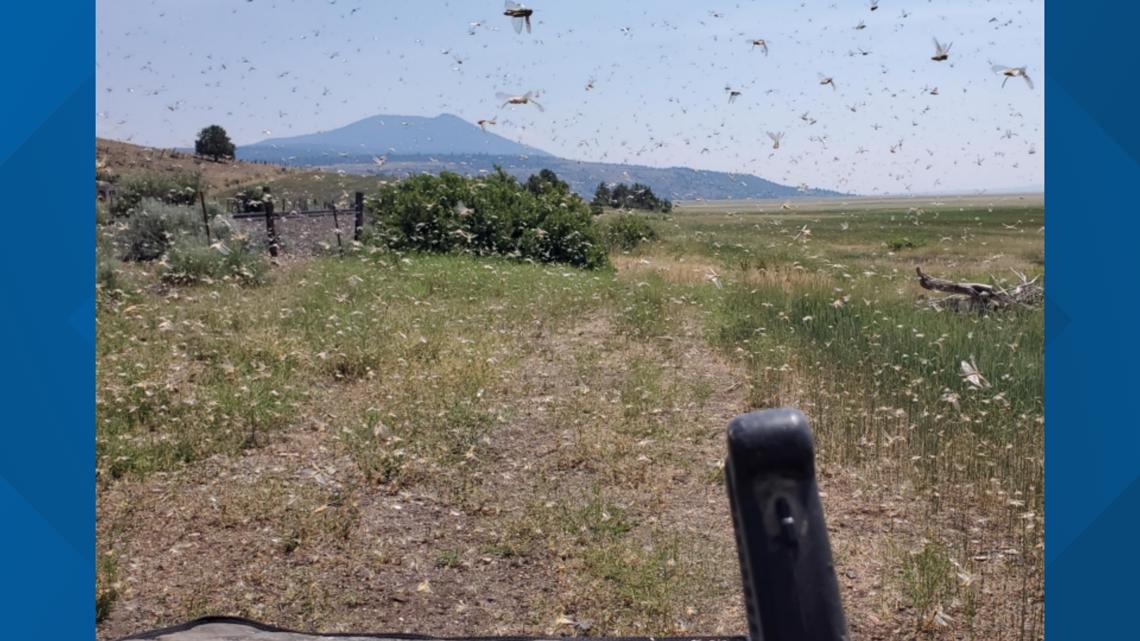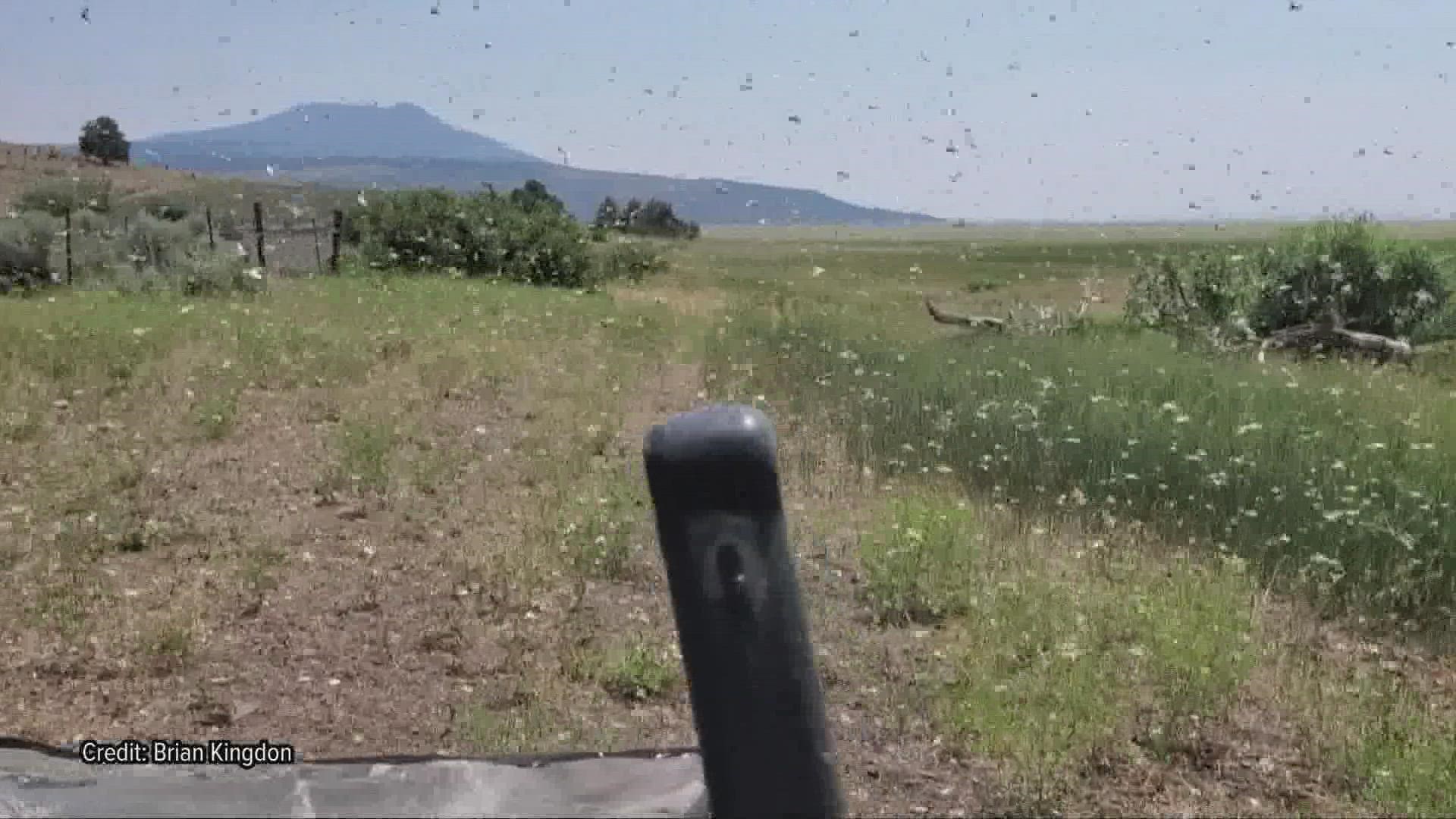SACRAMENTO, Calif. — Along with drought and climate change, a different type of threat is now devastating the fields of California farmers: grasshoppers.
The bugs are mowing down fields across Northern California.
"We're getting counts of, you know, 100 to 200 grasshoppers per square foot in the fields," said Modoc County hay farmer Bryce O'Sullivan. "The numbers are so bad that they're actually completely eating it all the way to the ground."
O'Sullivan says that most of his fields are at a complete loss for their second cutting due to the pests. Grasshoppers can consume up to 250% of their body weight daily and 30 pounds of the insects consume the same forage as a 600-pound steer, according to farm advisor Tom Getts of the University of California Cooperative Extension.


Grasshopper levels are anomalously high this year due to a combination of factors. A record dry and warm spring promoted higher populations, and fungi levels that normally keep grasshopper levels in check are much lower than normal.
This issue has been plaguing farmers in higher elevation farms in the northern mountainous regions of the state. The drought caused the pests to seek out moist, irrigated agricultural fields as opposed to dried out natural grasses.
"Once they have wings, they've been shown to move, you know, 10 to 20 miles to search for food. And they really have had a devastating impact, where people have had the water to grow hay, because there hasn't been much on the range lands for them to eat," Getts said.
Farmers are struggling with finding solutions to this problem. Natural predators, like birds, spiders and rodents, are barely putting a dent in their populations.
"People have never seen grasshoppers like this. And you know, people that have never even thought about spraying any sort of pesticide had been left with no other option, because with the price of hay and their production practices, you know, they're just getting eaten out of the house and home," O'Sullivan said.
With a limited supply of hay and high demand from the cattle and dairy industries, it appears likely that beef and dairy prices could rise as a result.



















